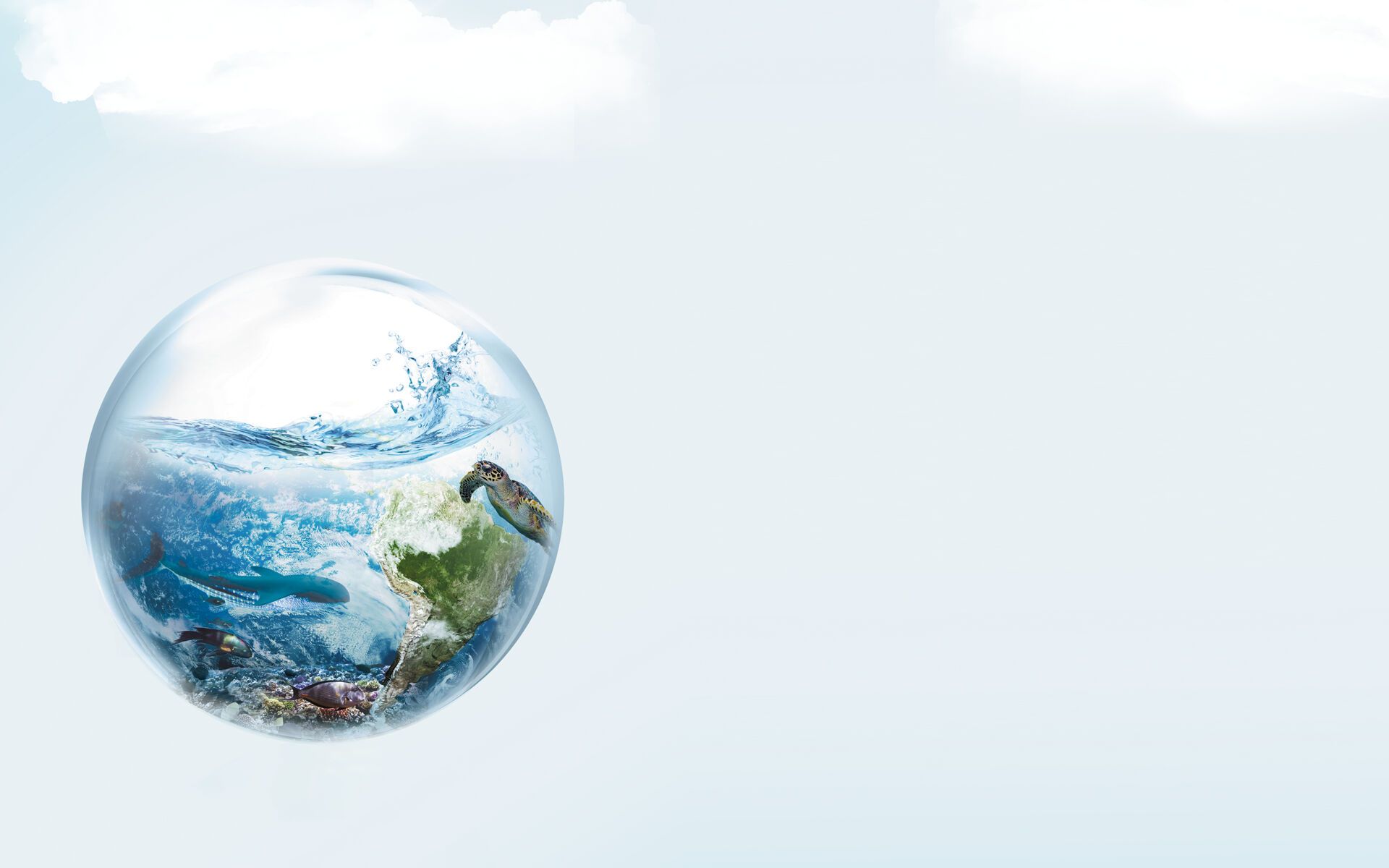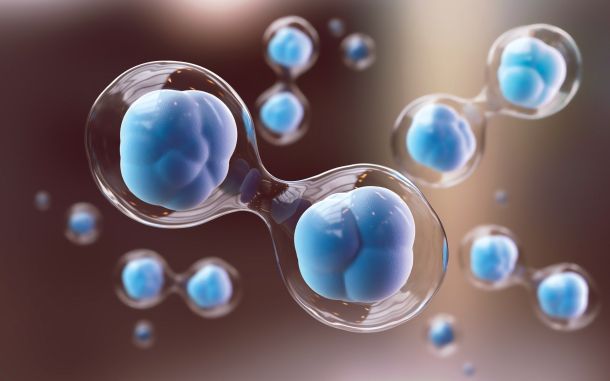The Giant Aquarium

In This Article
-
Our world is like a giant aquarium: 70% of its surface is covered with water; it has a lamp, a heater, and air pumps, and there are biological systems for cleaning and food supplies.
-
The beginning of the chain of life is connected to the existence of plankton, while the viability of plankton depends on the iron sent from space by meteors, like food provided to an aquarium tank.
-
This magnificent aquarium, which is home to about 230,000 identified species so far, still has secrets waiting to be discovered. 95% of the ocean floor is yet to be explored. Today, the surface of Mars is better known than the deep oceans.
Constant progress within science and technology helps shed light on secrets related to life as well as wisdom and the real purpose behind many phenomena. Science also helps us to realize that many events we assume to be unconnected actually exist in harmony and solidarity with each other.
Our world is like a giant aquarium: 71% of its surface is covered with water, and it has a lamp, a heater, and air pumps, and there are biological systems for cleaning and food supplies.
This giant aquarium covers a surface area of 361 million square kilometers; its volume is 1.3 billion cubic kilometers, and it has an average depth of around 3,700 meters—and a maximum depth of 10,994 meters (the Mariana Trench). A wide range of interesting creatures, each having unique biological characteristics—from 30-meter-long whales to microscopic plankton [1]—live within this magnificent aquarium. Since the Sun lights up only the upper zones of the seas, the remaining majority is always in darkness. Certain temperature and depth ranges provide natural living environments for certain species.
The night lamp
Bright moonlight is a significant factor for the growth of larval fishes [2]. When the moonlight emerges, the larval fishes approach the surface of the sea while the predators that feed on them simultaneously move to the bottom.
In a study carried out on the larval fishes of the sixbar wrasse (Thalassoma hardwicke), in the family Labridae, known for its thick lips, it was found that their growth rate was maximized with the rise of the moon—i.e., when the first half of the night was dark, and the second half of the night was bright. Yet, the light mentioned here was not just light from any source, but the light coming from the rising moon. It was also found that lunar phases were significant, too: the new moon provided the most efficient time period for growth whereas the full moon was the least efficient time for growth. In addition, cloud-covered nights had a negative effect on growth.
Upon the emergence of moonlight, the zooplankton, the tiny animals on which the sixbar wrasse feeds most, approach the surface, while the lantern fishes, a major predator, stay deep under the sea. Meanwhile, the plankton called “Noctiluca scintillans” emit blue light under the moonlight via a chemical process called bioluminescence. In lamps invented by mankind, a significant portion of energy dissipates in the form of heat; bioluminescent fish and plankton lose no energy. It was also found that the ecosystem is harmed by the intensive artificial light and surface pollution in coastal cities. It is certain that more effective ways of managing of fisheries needs to be developed.
The heater
The heater of this magnificent aquarium is the Sun. The amount of light that penetrates into the oceans and seas depends on the position of the Sun at any given moment, as well as the density of the water. Most of the sunlight that hits the surface of the water is reflected back. The red wavelengths are absorbed by water molecules in the top few meters of the water. The yellow and green wavelengths can penetrate a bit deeper, while the blue and purple wavelengths can penetrate as deep as 1 km. On the other hand, the blue surface color is the result of a variety of factors, such as dissolved chlorophyll.
The water in the part of the oceans below 1,100 meters, called the “deep zone,” is colder and consists of almost 80% of the total ocean volume. The average temperature of the world’s oceans is only 3.9 °C.
The upper 200 meters of the ocean, called the “sunlight zone,” is the part of the ocean where photosynthesis takes place, and it is also the zone which contains most of the biodiversity. The plants that live in the parts of the ocean deeper than the sunlight zone are unable to photosynthesize. For the survival of life in the depths, another source of heat is granted, in addition to the Sun. This source consists of the hydrothermal (hot water) channels that extend from magma to the ocean floor. Hydrothermal vents, containing mostly sulfur compounds of volcanic origin and fine-grained clay minerals, form the basis of special ecosystems, where the organisms are specially created to live in such environments.
The oceans and seas are equipped with unseen water pipelines. These are the ocean currents, which have been perfectly designed to bring food and increase the diversity of species. They also help create global heat transmission, which plays a dominant role in shaping the climate of many of Earth’s regions. One of the most striking examples of this is the hot water current called the Gulf Stream. The circulation of hot water guided by this stream along a specific course makes northwest Europe much more temperate than any other region at the same latitude.
The food
“And We have sent down iron, in which is stern might. And it has a lot of benefits for humankind. So that God may mark out those who help (the cause of) God and His Messengers, though they do not see Him. Surely God is All-Strong, All-Glorious with irresistible might" (Al-Hadid, 25).
The common opinion about the phrase “We have sent down” in the Qur’anic verse above is that the iron in our world came from the gigantic stars in space. Heavy metals like iron are created at the cores of giant stars. Iron can only be produced in giant stars, which are much larger than the Sun, at temperatures up to a several hundred million degrees. The Sun’s temperature of about 15 million degrees does not suffice to form iron. When the amount of iron in these stars exceeds a certain level, the star cannot withstand it and explodes—also called a “supernova.” Meteoroids that contain iron are dispersed into space, and they travel until they are caught in the gravity of a celestial body and merge with it. Not only iron but also other elements such as nickel (59Ni) came to our world from outside the solar system.
Another opinion suggests that thousands of small and large meteoroids, known colloquially as shooting stars, scatter by colliding with our atmosphere and descend to the Earth in the form of dust. Asteroids enter the atmosphere at a very high speed, are heated due to friction and burn to pieces, with a significant portion of them turning into dust. Iron atoms abundant in this dust are a source of food for plankton in the oceans, which have a vital role in the production of most of the oxygen produced through photosynthesis, and thus in the life chain on Earth. This dust is an important source of the iron that the plankton need for photosynthesis.
Iron-rich grains of sand that reach the oceans after sandstorms in great deserts are assigned the same duty: ensuring the proliferation of phytoplankton, followed by a plenitude of fish in certain periods.
According to a study carried out by the Marine Mammal Institute at Oregon State University [3], the blue whale, one of the largest mammals, feeds on krill [4], one of the smallest creatures; krill feed on zooplankton, which in turn feed on phytoplankton. In other words, the beginning of the chain of life is connected to the existence of plankton, while the viability of plankton depends on the iron sent from space by meteors, like food provided to an aquarium tank.
This magnificent aquarium, which is home to about 230,000 identified species iso far, still has secrets waiting to be discovered. According to the US National Oceanic and Atmospheric Administration, 95 percent of the ocean floor is yet to be explored. Today, the surface of Mars is better known than the deep oceans. Due to risks such as the high pressure, more people have gone into space than to the deep ocean floor.
As scientific developments progress, it is understood that a thing is not just what it seems, and life is full of wise and hidden purposes that we do not know or understand. The sheer interconnection of the visible and invisible parts of the entire ecosystem continues to amaze fair-minded scientists. The connection between moonlight and the unicellular plankton that produce bioluminescence, the magnetic protective shield that produces the aurora borealis, and shooting stars that provide sustenance to some sea creatures in the form of iron dust, are perfect scenes offered for our observation.
Notes
- Microscopic creatures that aquatic animals feed on.
- Jeffrey Shima et al. Lunar rhythms in growth of larval fish. Proceedings of the Royal Society B: Biological Sciences, 2021, 288. 20202609. 10.1098/rspb.2020.2609.
- “PNAS Study: Migrating blue whales rely on memory more than environmental cues to find prey”, today.oregonstate.edu/news/pnas-study-migrating-blue-whales-rely-memory-more-environmental-cues-find-prey
- “Krill”, en.wikipedia.org/wiki/Krill








